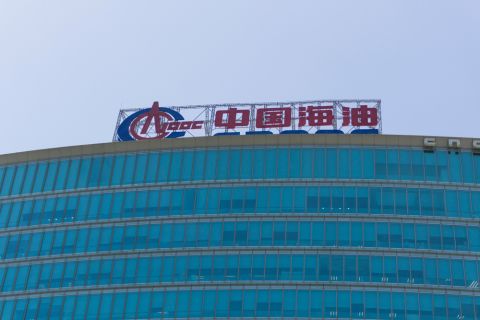Today oil and gas companies face two significant challenges that underscore the need to manage knowledge-an asset that people now value as highly as any physical asset. One challenge is to integrate the knowledge base that already exists in two companies after a merger or acquisition, to foster effective collaboration and decision-making between new colleagues who may hold different pieces of the same puzzle. All of them seek exploration and production success, or returns on capital invested, but they probably take a different road to get there. An equally important challenge is to capture intellectual capital and best practices from experienced workers before a generation of irreplaceable talent retires. How can a company "download" that elusive, yet highly prized know-how and judgment? Both independents that merge and the recently formed supermajors expect to streamline their operations and leverage dramatically greater capabilities for global exploration, technology development and risk mitigation. But without an effective strategy that rapidly unifies existing computer, accounting, technical and other systems and business processes, success is not assured. If employees do not connect and communicate, the result is lost time, lost oil and gas resources, decreased productivity and ultimately, a threat to enterprise value. The need for real-time collaboration on a global scale has become more pressing. For instance, billions of dollars could ride upon the ability of earth scientists working in West Africa to instantly share geological information with their coworkers based in Louisiana. What's more, technologies such as 4-D seismic and smart wells promise to increase the amount and complexity of information that needs to be captured, interpreted and shared among workers worldwide. But are companies up to this task? Studies have shown that nearly half of recent mergers and acquisitions damaged shareholder value, largely due to problems in the postmerger integration phase. Only 30% of major mergers worldwide made a significant contribution to shareholder value, with 31% associated with shareholder erosion, according to a 2001 study by KPMG Transaction Services. Clearly, organizations that integrate quickly after a merger or other consolidation-and forge the right infrastructure-will realize the cost savings they seek and take full advantage of the momentum generated by the deal. Loss due to merger Postmerger or postacquisition integration will unfold differently for each newly constituted company, but there are three important steps every organization should consider. First, align senior management. The top people should develop and share an overall vision for completing a successful integration, and also outline the priorities, tasks and accountability measures needed to achieve that result. The organization can engage a consultant or other third party to plan and facilitate an executive workshop in which senior management establishes the strategic context for the integration, defines goals and identifies obstacles. Managers need to identify which people will be responsible for which process. An integration plan and a prioritized list of near-term activities should take into account interim operating governance as the integration proceeds. Second, set up a detailed workplan. Managers need to define the steps to be taken, outline metrics, and ensure the efficient allocation of resources during the integration process. Without such a plan it will be difficult to accurately measure progress and there is more potential for schedule problems and cost overruns. Metrics-for financial and operational matters and creating the right business processes-are valuable because they provide targets for maximizing the value of the merger. If the organization does not align metrics with its overall vision, the desired changes needed to create value might not occur-thus diminishing or entirely negating the merger's intended results. For each of several functional areas, managers should assess the current state of affairs and any potential problem areas, best practices (drawn either from current practices at one of the merging organizations or from industry best practices), and desired end results. From that assessment, a list of the projects needed is then drawn up. Roles and responsibilities are assigned to project teams and subteams in a way that ensures consistent implementation across functional areas, including exploration, production and drilling; finance and accounting; information technology; human resources; corporate planning and development; and refining and marketing. It usually takes six to eight weeks to create and set the workplan in motion. It is critical that the company commits resources sufficient to successfully implement its plan, even when this commitment poses a challenge given the needs of moving forward with normal E&P operations. Third, devise a comprehensive communications strategy. This should ensure effective outreach to the shareholders and media as well as open communication with employees, who often experience a demoralizing sense of uncertainty after a merger or acquisition, draining value from the organization. Decisions about management structure, key roles, reporting relationships, layoffs, restructuring and other career-affecting aspects of the integration should be made, announced and implemented as soon as possible after the deal is signed. To communicate effectively, the organization can create a web site that allows employees to ask questions anonymously and receive answers. People will want to know if they will have a job with this organization in the future, to whom they will be reporting and how their salary may be affected. If these questions are not answered early on, the company risks losing the expertise needed to realize potential synergies after consolidation. Throughout the process of a successful integration, from alignment of senior management to creation of a workplan to implementation of a communications strategy, speed is essential if the organization is to retain its experienced workers. Loss due to retirement Recent trends indicate a coming talent shortage in the oil and gas industry. With close to half of the industry's most experienced, most knowledgeable employees, from welders to geophysicists, approaching retirement age, companies will need to recruit large numbers of skilled replacement workers during the next decade. They will be extraordinarily difficult to find, however, both because of past downsizing and because younger generations of workers have, in large part, chosen to enter other industries or professions. According to John W. Gibson, president and chief executive of Landmark Graphics Corp., oil and gas workers averaged 48 years of age in 2000, meaning the industry could lose 60% of its most experienced hands in just the next six years. (See "A New Kind of Help Wanted," Oil and Gas Investor, September 2001.) This talent gap will affect oil and gas companies in significant ways. As waves of highly skilled employees retire in the near future, companies will have to function with fewer and less experienced workers, severely impairing their ability to efficiently locate, develop and bring to market new supplies of oil and gas. The challenge is both in coping with the worker shortage as it becomes more severe, and in taking steps to resolve the issue over the longer term. What's more, the shortage of skilled workers is likely to persist for many years. The U.S. Bureau of Labor Statistics estimates that during the next decade the industry's demand for geologists and geophysicists, for example, will be just half of what it is today. Under these circumstances, companies that implement effective knowledge-management strategies can expect to gain competitive advantage. They will be able to capture the invaluable knowledge that expert workers have acquired during long careers in the industry. And, they will be able to share this knowledge with the midcareer workers who will soon be responsible for making important decisions. One leading oil and gas company already provides its workers with on-demand access to a DVD that depicts the procedure for changing a compressor belt. In addition, many companies have taken initial steps to implement innovative knowledge-management strategies. Even for these early adopters, however, true enterprisewide systems that allow in-context knowledge-sharing remain a thing of future. Not just a tech issue The technology must develop further, but effective knowledge-sharing cannot be achieved by technology alone. New applications undoubtedly will help address this challenge. Nonetheless, nonintrusive means of capturing knowledge have become necessary in the oil and gas industry precisely because those workers who possess the most valuable knowledge have failed to share it, while those workers who need that knowledge have failed to seek it out. To remain competitive in the future, oil and gas companies must implement aggressive change-management initiatives. These begin with strong executive sponsorship and they address the cultural, as well as the technological, issues involved in effective knowledge management-whether the challenge is to capture and share intellectual capital or to integrate enterprises. Once knowledge has been captured, what's the best way to share it? Existing collaboration tools are useful in that they enable less experienced workers to locate experts within the organization. Nonetheless, this approach can prove distracting to the expert, who must find time for consultations, and labor-intensive for the user, who might devote considerable effort to locating the appropriate resource. Users can also access white papers, project abstracts and other research materials through a common portal, but this method of knowledge-sharing requires the user to depart from the immediate work situation. The ideal knowledge-sharing solution does not yet exist, but one point is clear: in the near future, innovative technologies will help organizations take advantage of what is sometimes called "contextual collaboration," giving less experienced workers the information they need, when and where they need it. For example, rather than setting a project task aside to find the needed information, the less-experienced worker will press a button and instantly access annotations recorded by an expert who was, at one time, working on the same task, in a similar situation. The worker will have at his fingertips the best information the organization has to offer, fully in context, whether in text, voice or video formats. This "reverse annotation" will enable an inexperienced geophysicist, for example, to access on-demand information tailored to the unique challenges of the process-information that can always be supplemented by schematics and other resources at any time, if necessary. The application will also give the worker a direct means of consulting with the organization's current experts, through readily available contact information, voice or access to a web-enabled chat room. M Amanda Mesler is a managing director at KPMG Consulting and leads the firm's oil and gas practice. The views and opinions expressed in this article do not necessarily represent those of KPMG Consulting Inc.
Recommended Reading
US Raises Crude Production Growth Forecast for 2024
2024-03-12 - U.S. crude oil production will rise by 260,000 bbl/d to 13.19 MMbbl/d this year, the EIA said in its Short-Term Energy Outlook.
Exxon Mobil Green-lights $12.7B Whiptail Project Offshore Guyana
2024-04-12 - Exxon Mobil’s sixth development in the Stabroek Block will add 250,000 bbl/d capacity when it starts production in 2027.
Deepwater Roundup 2024: Offshore Australasia, Surrounding Areas
2024-04-09 - Projects in Australia and Asia are progressing in part two of Hart Energy's 2024 Deepwater Roundup. Deepwater projects in Vietnam and Australia look to yield high reserves, while a project offshore Malaysia looks to will be developed by an solar panel powered FPSO.
Sangomar FPSO Arrives Offshore Senegal
2024-02-13 - Woodside’s Sangomar Field on track to start production in mid-2024.
CNOOC Makes 100 MMton Oilfield Discovery in Bohai Sea
2024-03-18 - CNOOC said the Qinhuangdao 27-3 oilfield has been tested to produce approximately 742 bbl/d of oil from a single well.




